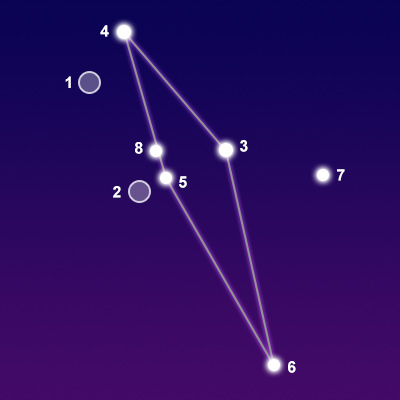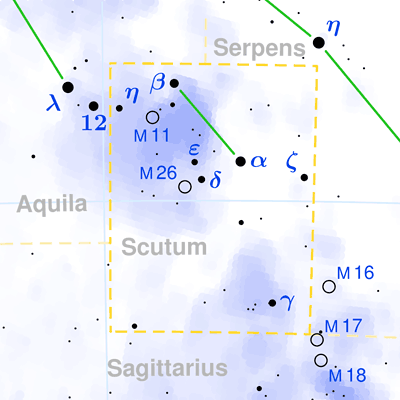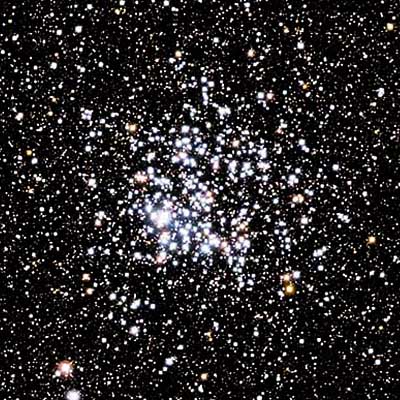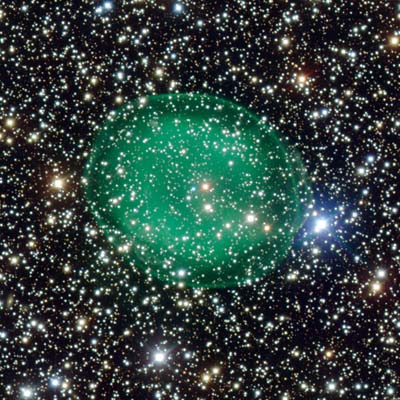Pronunciation:
(SKU-tum)Abbreviation:
SctGenitive:
ScutiRight Ascension:
19 hoursDeclination:
-10 degreesArea in Square Degrees:
109Crosses Meridian:
9 PM, August 15Visible Between Latitudes:
70 and -90 degreesThe constellation Scutum, the shield, is located in the southern hemisphere of the sky. It is visible at latitudes south of 74 degrees from June through August. It is a small constellation, occupying only 109 square degrees. This makes It the 5th smallest constellation in the night sky. It is bordered by the constellations Aquila, Sagittarius and Serpens Cauda.
There are no myths associated with Scutum. The name means “shield” in Latin. It was introduced by Polish astronomer Johannes Hevelius in 1690. It was originally named Scutum Sobiescianum, or Shield of Sobieski, and was drawn as the coat of arms of John Sobieskii, king of Poland, in honor of his victory against the Turks in 1683. As the Turkish army marched on Vienna in 1683, they were turned back at the gates of the city. Seven years later, Scutum was created in honor of the king. The constellation first appeared in the scientific journal Acta Eruditorum in August 1684. The name was eventually shortened to Scutum, the shield.

points of interest below © Sea and Sky

© Torsten Bronger CC BY-SA 3.0
M26
Ionnina
Beta Scuti
Delta Scuti
Gamma Scuti
Zeta Scuti
Epsilon Scuti
N/A
"John"
N/A
N/A
N/A
N/A
N/A
Open Star Cluster
Orange Giant Star
Yellow Giant Star
Yellow-White Giant Star
White Subgiant Star
Yellow Giant Star
Yellow Giant Star
8.00
3.85
4.22
4.60
4.67
4.68
4.88
The stars in Scutum are faint, but their shape does resemble that of a shield. The brightest star in the constellation is Ionnina with a visual magnitude of 3.85. It is an orange giant star located approximately 174 light years from Earth. The second brightest star is Beta Scuti with a magnitude of only 4.22. It is a yellow giant star that lies some 690 light years away from our solar system. The third brightest star is Delta Scuti with a magnitude of 4.60. It is a yellow-white giant star that lies approximately 202 light years from our solar system.
Scutum contains two Messier objects. M11, also known as the Wild Duck Cluster, is an open star cluster containing about 2,900 stars. It is one of the richest and most compact open clusters known to exist. M26 is another open star cluster in this constellation. It contains about 90 stars and is located about 5,000 light years from Earth. Both of these clusters can easily be seen with a pair of binoculars. Scutum contains a number of other deep-sky objects including star clusters and nebulas that can only be seen with large telescopes. The most notable of these is a planetary nebula called IC 1295. This colorful nebula is located approximately 4,700 light years from Earth.

seen by the Hubble Space Telescope

© European Southern Observatory / CC BY 4.0



